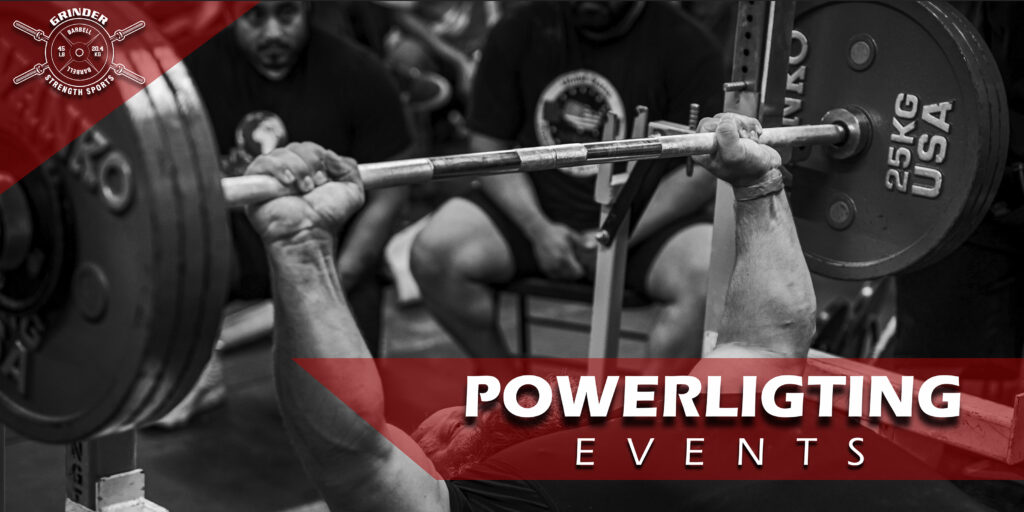In powerlifting and strength training, the goal is always to maximize performance while minimizing the risk of injury. However, injuries can still occur despite our best efforts. Understanding how to manage and pivot during training injuries, as well as adopting the best practices for injury prevention, is crucial for long-term success and health in the sport.
Preventing Training Injuries
1. Proper Warm-Up and Cool-Down: A comprehensive warm-up and cool-down routine is essential for preparing the body for intense physical activity and aiding in recovery afterward.
- Warm-Up: Incorporate dynamic stretching, mobility exercises, and gradual weight increases to prepare the muscles and joints for the upcoming workout.
- Cool-Down: Include static stretching and foam rolling to promote flexibility and muscle relaxation.
2. Technique and Form: Maintaining proper form and technique is critical for injury prevention. Poor form can lead to undue stress on joints and muscles, increasing the risk of injury.
- Education: Seek guidance from experienced coaches or trainers to ensure proper technique.
- Focus: Concentrate on maintaining good form throughout each lift, even as fatigue sets in.
3. Progressive Overload: Gradually increasing the weight lifted is essential for strength gains, but it must be done in a controlled manner.
- Incremental Increases: Avoid making large jumps in weight. Small, consistent increases allow the body to adapt safely.
- Listening to Your Body: Pay attention to how your body feels. If something doesn’t feel right, reduce the weight or stop the exercise.
4. Balanced Training Program: A well-rounded training program that includes not only the primary lifts but also accessory work and mobility exercises helps prevent muscle imbalances and overuse injuries.
- Variety: Incorporate different exercises to target various muscle groups and prevent overuse.
- Rest and Recovery: Schedule rest days and deload weeks to allow the body to recover and adapt.
5. Nutrition and Hydration: Proper nutrition and hydration support muscle recovery and overall health.
- Balanced Diet: Ensure you’re consuming enough protein, carbohydrates, fats, vitamins, and minerals to fuel your training and recovery.
- Hydration: Stay well-hydrated before, during, and after workouts to maintain performance and prevent muscle cramps.
Managing Training Injuries
1. Recognizing the Injury: Understanding the type and severity of an injury is the first step in managing it effectively.
- Common Injuries: Strains, sprains, tendonitis, and muscle tears are common in powerlifting.
- Symptoms: Look for signs such as pain, swelling, bruising, limited range of motion, and weakness.
2. Immediate Response: When an injury occurs, taking the right immediate steps can minimize damage and speed up recovery.
- R.I.C.E. Method: Rest, Ice, Compression, and Elevation are effective for managing acute injuries.
- Seek Medical Advice: For severe or persistent injuries, consult a healthcare professional for a proper diagnosis and treatment plan.
3. Modifying Training: While injured, it’s crucial to modify your training to avoid aggravating the injury while still maintaining overall fitness.
- Alternative Exercises: Identify exercises that don’t exacerbate the injury. For example, if you have a shoulder injury, focus on lower body exercises like squats and deadlifts.
- Reduced Intensity: Lower the intensity and volume of your workouts to accommodate your injury and prevent further harm.
- Focus on Recovery: Incorporate rehabilitation exercises, stretching, and mobility work specific to your injury to aid in recovery.
Pivoting During Injury Recovery
1. Maintaining Activity: Staying active while injured helps maintain overall fitness and can promote faster recovery.
- Low-Impact Activities: Engage in low-impact activities such as swimming, cycling, or walking to stay active without putting stress on the injured area.
- Cross-Training: Use this opportunity to work on other aspects of fitness, such as cardiovascular health or flexibility.
2. Strengthening Weak Areas: Injury recovery is an excellent time to address weak points and improve overall strength and stability.
- Rehabilitation Exercises: Perform exercises prescribed by a healthcare professional to strengthen the injured area.
- Core and Stability Work: Focus on core and stability exercises to improve overall strength and reduce the risk of future injuries.
3. Mental Health and Motivation: Injury can be mentally challenging, but staying positive and motivated is crucial for recovery.
- Set New Goals: Focus on achievable short-term goals that keep you motivated and engaged in your recovery process.
- Stay Connected: Maintain contact with your training community for support and encouragement.
Best Practices for Long-Term Injury Prevention
1. Regular Assessments: Regularly assess your training program, technique, and physical condition to identify potential risk factors.
- Technique Check: Periodically review your form with a coach to ensure you’re lifting safely.
- Program Review: Adjust your training program as needed to address any emerging weaknesses or imbalances.
2. Incorporate Mobility and Flexibility Training: Regular mobility and flexibility work can prevent stiffness and improve movement quality.
- Dynamic Stretching: Include dynamic stretches in your warm-up to prepare the body for lifting.
- Static Stretching: Use static stretches in your cool-down to maintain flexibility and reduce muscle tightness.
3. Listen to Your Body: Pay attention to signs of fatigue, discomfort, and pain. Don’t ignore these signals, as they can indicate the need for rest or adjustments in your training.
- Rest and Recovery: Prioritize rest and recovery to allow the body to heal and adapt.
- Preventive Measures: Use preventive measures such as regular massages, chiropractic care, or physical therapy to keep the body in optimal condition.
Conclusion
Managing, pivoting, and preventing training injuries are essential aspects of a successful and sustainable powerlifting journey. By adopting best practices for injury prevention, understanding how to manage injuries when they occur, and knowing how to pivot your training during recovery, you can maintain your progress and continue to achieve your strength goals. Embrace these strategies to ensure a long, healthy, and productive career in powerlifting.




Comments are closed